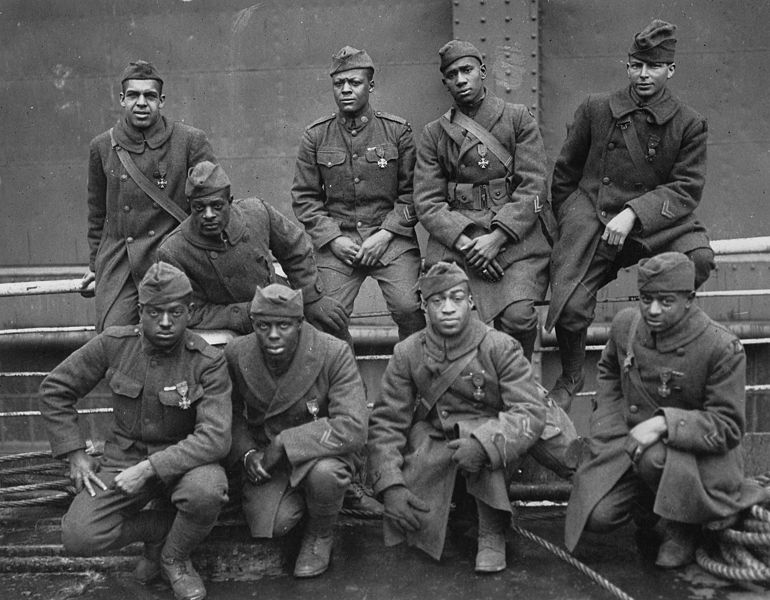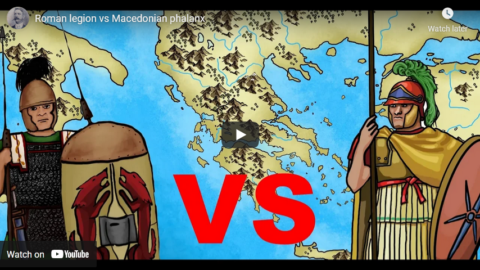Epimetheus
Published 13 Aug 2018Roman legion vs Macedonian phalanx (Macedonian wars)
Battle of Pydna 168 BC and battle of Cynoscephalae 197 BCSupport new videos from Epimetheus on Patreon! 😀
https://www.patreon.com/Epimetheus1776roman legion, roman legion tactics, macedonian phalanx, Macedonian phalanx tactics, Macedonian phalanx vs roman legion, ancient Macedonian army, ancient roman army, roman army, Roman legionary, rome vs Greece, Rome vs Macedon, roman army weapons, Roman army tactics, Macedonian wars, battle Cynoscephalae, battle of Pydna, republican Roman army, Roman maniple, Roman republic, documentary, ancient Rome documentary, ancient Greece documentary, rome documentary, battle of magnesia, rome selucid empire, Roman empire vs selucid empire, diadochi, ancient,
February 7, 2021
Roman legion vs Macedonian phalanx
QotD: The greatest sin of the Baby Boomers
When I was in college, “grunge” was all the thing … except for the really cool alterna-kids, who were going through a Sixties retro phase. As much as I hate to think of anyone taking their cultural cues from Bill Clinton, that’s what happened. 1988-2001 was the great swan song of Boomerism; Bill Clinton was their avatar; Forrest Gump their valedictory (and, really, what could possibly sum up the Baby Boomers better than the story of a simpleton who lucked into a starring role in the greatest, wealthiest, healthiest, freest society on earth … then fucked it up and threw it all away on some dumb broad, because they were too goddamn stupid to see what they were doing? Hillary Clinton being the dumb broad in question).
If that’s harsh on the Boomers, well, sorry, Moonbeam — History don’t care about your feelings. But “the Sixties” isn’t the gravest charge History can lay against you. This is: After all that, you gave the world us, Gen X, the Dumbest Generation of Narcissists in the History of the World. Yes, you guys are responsible for both “Rocky Raccoon” and “Smells Like Teen Spirit.”
Severian, “The Look”, Rotten Chestnuts, 2020-10-09.
February 6, 2021
“WebMD is the Internet’s most important source of medical information. It’s also surprisingly useless”
Scott Alexander discusses why WebMD is not the be-all and end-all of internet medical resources:
WebMD is the Internet’s most important source of medical information. It’s also surprisingly useless. Its most famous problem is that whatever your symptoms, it’ll tell you that you have cancer. But the closer you look, the more problems you notice. Consider drug side effects. Here’s WebMD’s list of side effects for a certain drug, let’s call it Drug 1:
Upset stomach and heartburn may occur. If either of these effects persist or worsen, tell your doctor or pharmacist promptly. If your doctor has directed you to use this medication, remember that he or she has judged that the benefit to you is greater than the risk of side effects. Many people using this medication do not have serious side effects. Tell your doctor right away if you have any serious side effects, including: easy bruising/bleeding, difficulty hearing, ringing in the ears, signs of kidney problems (such as change in the amount of urine), persistent or severe nausea/vomiting, unexplained tiredness, dizziness, dark urine, yellowing eyes/skin. This drug may rarely cause serious bleeding from the stomach/intestine or other areas of the body. If you notice any of the following very serious side effects, get medical help right away: black/tarry stools, persistent or severe stomach/abdominal pain, vomit that looks like coffee grounds, trouble speaking, weakness on one side of the body, sudden vision changes or severe headache.
And here’s their list of side effects for let’s call it Drug 2:
Nausea, loss of appetite, or stomach/abdominal pain may occur. If any of these effects persist or worsen, tell your doctor or pharmacist promptly. Remember that your doctor has prescribed this medication because he or she has judged that the benefit to you is greater than the risk of side effects. Many people using this medication do not have serious side effects. This medication can cause serious bleeding if it affects your blood clotting proteins too much. Even if your doctor stops your medication, this risk of bleeding can continue for up to a week. Tell your doctor right away if you have any signs of serious bleeding, including: unusual pain/swelling/discomfort, unusual/easy bruising, prolonged bleeding from cuts or gums, persistent/frequent nosebleeds, unusually heavy/prolonged menstrual flow, pink/dark urine, coughing up blood, vomit that is bloody or looks like coffee grounds, severe headache, dizziness/fainting, unusual or persistent tiredness/weakness, bloody/black/tarry stools, chest pain, shortness of breath, difficulty swallowing.
Drug 1 is aspirin. Drug 2 is warfarin, which causes 40,000 ER visits a year and is widely considered one of the most dangerous drugs in common use. I challenge anyone to figure out, using WebMD’s side effects list alone, that warfarin is more dangerous than aspirin. I think this is because if WebMD said “aspirin is pretty safe and most people don’t need to worry about it”, people might use aspirin irresponsibly, die, and then their ghosts might sue WebMD. Or if WebMD said “warfarin can be dangerous, be careful with this one”, people might refuse to take warfarin because “the Internet said it was dangerous”, die of the stuff warfarin is supposed to treat, and then their ghosts might sue WebMD. WebMD solves this by never giving the tiniest shred of useful information to anybody.
This is actually a widespread problem in medicine. The worst offender is the FDA, which tends to list every problem anyone had while on a drug as a potential drug side effect, even if it obviously isn’t. This got some press lately when Moderna had to disclose to the FDA that one of the coronavirus vaccine patients got struck by lightning; after a review, this was declared probably unrelated. For the more serious version of this, read Get Ready For False Side Effects. Why does the FDA keep doing this if they know it makes their label information useless? My guess is it’s because they don’t want to look like cowboys who unprincipledly consider some things but not other things. What if someone accused the person deciding what things to consider of being biased? So the FDA comes up with a Procedure, and once you have a Procedure it has to be “take everything seriously”, and then it falls on random small-fry people who aren’t the FDA to pick up the slack and explain which side effects are worth worrying about or not, and then those small fries don’t do that, because they could get sued.
I think the same concern motivates WebMD diagnosing everything as cancer. If they said something other than cancer, then people might sigh with relief, not bother to get a cancer screening, die from some weird cancer that doesn’t present the way normal cancers do, and then their ghosts might sue WebMD.
Of course, WebMD and other online medical information sites didn’t invent hypochondria, they merely made it easier to do to yourself what Jerome K. Jerome did one fine London morning in 1888:
I remember going to the British Museum one day to read up the treatment for some slight ailment of which I had a touch — hay fever, I fancy it was. I got down the book, and read all I came to read; and then, in an unthinking moment, I idly turned the leaves, and began to indolently study diseases, generally. I forget which was the first distemper I plunged into — some fearful, devastating scourge, I know — and, before I had glanced half down the list of “premonitory symptoms,” it was borne in upon me that I had fairly got it.
I sat for awhile, frozen with horror; and then, in the listlessness of despair, I again turned over the pages. I came to typhoid fever — read the symptoms — discovered that I had typhoid fever, must have had it for months without knowing it — wondered what else I had got; turned up St. Vitus’s Dance — found, as I expected, that I had that too, — began to get interested in my case, and determined to sift it to the bottom, and so started alphabetically — read up ague, and learnt that I was sickening for it, and that the acute stage would commence in about another fortnight. Bright’s disease, I was relieved to find, I had only in a modified form, and, so far as that was concerned, I might live for years. Cholera I had, with severe complications; and diphtheria I seemed to have been born with. I plodded conscientiously through the twenty-six letters, and the only malady I could conclude I had not got was housemaid’s knee. […] I had walked into that reading-room a happy, healthy man. I crawled out a decrepit wreck.
From an improbable 1930s “death ray” to the radar network that helped defeat the Blitz
In a story from a few years back, Tim Harford outlines how a British Air Ministry prize for developing a “death ray” to use against enemy aircraft eventually helped kick off the discovery of radar:
… sometimes inventions need other inventions to unlock their full potential.
For the aviation industry, that story starts with the invention of the death ray, or at least an attempt to design a death ray, back in 1935.
Officials in the British Air Ministry were worried about falling behind Nazi Germany in the technological arms race.
The death ray idea intrigued them: they had been offering a £1,000 prize for anyone who could zap a sheep at a hundred paces. So far, nobody had claimed it.
But should they fund more active research? Was a death ray even possible?
Unofficially, they sounded out Robert Watson Watt, of the Radio Research Station.
And he posed an abstract maths question to his colleague Skip Wilkins.
“Suppose, just suppose,” said Watson Watt to Wilkins, “that you had eight pints of water, 1km [3,000ft] above the ground.
“And suppose that water was at 98F [37C], and you wanted to heat it to 105F.
“How much radio frequency power would you require, from a distance of 5km?”
Skip Wilkins was no fool.
He knew that eight pints was the amount of blood in an adult human, 98F was normal body temperature and 105F was warm enough to kill you, or at least make you pass out, which — if you’re behind the controls of an aeroplane — amounts to much the same thing.
So Wilkins and Watson Watt understood each other, and they quickly agreed the death ray was hopeless: it would take too much power.
But they also saw an opportunity.
Clearly, the ministry had some cash to spend on research. Perhaps Watson Watt and Wilkins could propose some alternative way for them to spend it?
Wilkins pondered. It might be possible, he suggested, to transmit radio waves and detect — from the echoes — the location of oncoming aircraft long before they could be seen.
Watson Watt dashed off a memo to the Air Ministry’s newly formed Committee for the Scientific Survey of Air Defence. Would they be interested in pursuing such an idea? They would indeed.
What Skip Wilkins was describing became known as radar.
Hitler’s Zipper: The MG-42 Universal Machine Gun
Forgotten Weapons
Published 4 Nov 2020http://www.patreon.com/ForgottenWeapons
https://www.floatplane.com/channel/Fo…
Cool Forgotten Weapons merch! http://shop.bbtv.com/collections/forg…
The MG42 was developed to be a more reliable and easier to manufacture replacement for the MG34, although both would serve side by side until the end of World War Two. Designed by Grossfuss company engineer Werner Gruner with no previous military or small arms design experience, the MG42 used heavy stampings for its main assemblies, thus reducing German need for expensive and difficult to obtain alloyed steels.
As a practical matter, the MG42 had a much higher rate of fire than the MG34, at 1500-1600 rounds per minute (more than 50% faster than the MG34). This was deemed desirable to improve the effectiveness of suppressing fire and the density of the cone of fire, but naturally resulted in much higher ammunition consumption than other machine gun models.
This example is a very early production Gustloff example, with the early horizontal charging handle, unreinforced wooden stock, and adjustable front sight. It was most likely captured in North Africa from Rommel’s forces, as they were a primarily user of the very early MG42s.
Contact:
Forgotten Weapons
6281 N. Oracle #36270
Tucson, AZ 85740
QotD: Political virtue signalling in everyday conversation
At the time, I was struck by the presumption — the belief that everyone present would naturally agree — that opposition to Brexit and a disdain of Trump were things we, the customers, would without doubt have in common. That the poem’s sentiment of friendship and community was being soured by divisive smugness escaped our local academic, whose need to let us know how leftwing he is was apparently paramount. The subtext was hard to miss: “This is a fashionable restaurant and its customers, being fashionable, will obviously hold left-of-centre views, especially regarding Brexit and Trump, both of which they should disdain and wish to be seen disdaining by their left-of-centre peers.” And when you’re out to enjoy a fancy meal with friends and family, this is an odd sentiment to encounter from someone you don’t know and whose ostensible job is to make you feel welcome.
It wouldn’t generally occur to me to shoehorn politics into an otherwise routine exchange, or into a gathering with strangers, or to presume the emphatic political agreement of random restaurant customers. It seems … rude. By which I mean parochial, selfish and an imposition — insofar as others may feel obliged to quietly endure irritating sermons, insults and condescension in order to avoid causing a scene and derailing the entire evening. The analogy that comes to mind is of inviting the new neighbours round for coffee and then, just before you hand over the cups to these people you’ve only just met, issuing a lengthy, self-satisfied proclamation on the merits of mass immigration, high taxes and lenient sentencing. And then expecting nodding and applause, rather than polite bewilderment.
David Thompson, “The Blurting”, David Thompson, 2019-09-04.
February 5, 2021
Where Hitler’s Moustache Came From, Kurds in WW2, and Germans in Italy – WW2 – OOTF 020
World War Two
Published 4 Feb 2021Where is Kurdistan and how were its people involved in World War Two? Did Germany try to annex South Tyrol from Italy? And why did Hitler have that Moustache? Find out in this episode of Out of the Foxholes.
Join us on Patreon: https://www.patreon.com/TimeGhostHistory
Or join The TimeGhost Army directly at: https://timeghost.tvFollow WW2 day by day on Instagram @ww2_day_by_day – https://www.instagram.com/ww2_day_by_day
Between 2 Wars: https://www.youtube.com/playlist?list…
Source list: http://bit.ly/WW2sourcesHosted by: Indy Neidell
Written by: Lewis Braithwaite, Ian Irungu, Timothy Smith
Director: Astrid Deinhard
Producers: Astrid Deinhard and Spartacus Olsson
Executive Producers: Astrid Deinhard, Indy Neidell, Spartacus Olsson, Bodo Rittenauer
Creative Producer: Maria Kyhle
Post-Production Director: Wieke Kapteijns
Research by: Lewis Braithwaite, Ian Irungu, Timothy Smith
Edited by: Michał Zbojna
Sound design: Marek Kamiński
Map animations: Eastory (https://www.youtube.com/c/eastory)Colorizations by:
Klimbim https://www.flickr.com/photos/2215569…
Mikołaj UchmanIcons from The Noun Project:
noun_Helmet_25216 Helmet by Daniel Turner
X by Richard KunáSoundtracks from Epidemic Sound:
“When in Bavaria” – Trabant 33
“Dawn Of Civilization” – Jo Wandrini (1)
“Ancient Discoveries” – Gabriel LewisSources:
Bundesarchiv, Bild 137-055690
Bundesarchiv, Bild 137-055691Archive by Screenocean/Reuters https://www.screenocean.com.
A TimeGhost chronological documentary produced by OnLion Entertainment GmbH.
The 369th Infantry Regiment in WW1 – the “Harlem Hellfighters”
Lawrence W. Reed remembers the US regiment that spent the most days in combat during WW1 and was awarded the French Croix de Guerre for the unit’s incredible fighting efforts:

“Some of the colored men of the 369th (15th N.Y.) who won the Croix de Guerre for gallantry in action.” Left to right. Front row: Pvt. Ed Williams, Herbert Taylor, Pvt. Leon Fraitor, Pvt. Ralph Hawkins. Back Row: Sgt. H. D. Prinas, Sgt. Dan Strorms, Pvt. Joe Williams, Pvt. Alfred Hanley, and Cpl. T. W. Taylor.
Records of the War Department General and Special Staffs via Wikimedia Commons.
Formed from a New York National Guard unit, the men of the 369th learned basic military practices at Camp Whitman, New York, before being sent to Camp Wadsworth in Spartanburg, South Carolina, for combat training. They were not welcomed by many of the locals there, and some were subjected to discrimination and vile epithets for no more reason than their color. In December 1917, they were shipped to France where they expected to see action on the front lines.
Their high spirits were quickly dashed when it became apparent the Army did not want to deploy them for anything other than manual labor, far from the fighting. Even the rifles they brought with them were confiscated by US Army officials.
The commander of the American Expeditionary Force, General John J. Pershing, was reluctant to commit any US troops to the front until he felt he had assembled them in sufficient numbers to ensure victory. The French, meanwhile, were desperate for manpower. Finally bowing to French pressure, Pershing gave them the 369th. While some regarded black troops as expendable, they ultimately proved themselves indispensable.
Consider this amazing record of the Harlem Hellfighters: No American unit experienced more time in combat than they did — no less than 191 days under fire. They never lost an inch of ground. The enemy never captured a single of their number. They suffered the highest casualty rate of any US regiment. None deserted. The grateful French bestowed their highest military honor, the Croix de Guerre, upon the entire regiment. Many individuals of the regiment received the US Army’s second-highest award, the Distinguished Service Cross. Posthumously, Henry Johnson received America’s Medal of Honor in 2015. The 369th ended up as the most decorated US regiment of the war.
Another distinguishing feature of the Harlem Hellfighters was their band, the largest and best-known of any regiment. Its leader was James Reese Europe, whose enlistment in 1917 proved to be a boon for recruitment. He was one of America’s best-known black musicians and others like Noble Sissle, who became Europe’s lieutenant and lead vocalist, were eager to serve with him.
Europe’s band was extremely popular with the French, even when Europe introduced his own arrangement of La Marseillaise, France’s national anthem. The Hellfighters’ band brought both jazz and ragtime music to France, where nobody had heard either before.
Tank Chats #93 Humber Hornet | The Tank Museum
The Tank Museum
Published 24 Jan 2020Here David Fletcher takes a look at the Humber Hornet, a specialised air-deployable Armoured Fighting Vehicle. It was designed to carry the Malkara, an anti-tank guided missile developed by Australia and the United Kingdom.
Support the work of The Tank Museum on Patreon: ► https://www.patreon.com/tankmuseum
Visit The Tank Museum SHOP: ►tankmuseumshop.org
Twitter: ► https://twitter.com/TankMuseum
Instagram: ► https://www.instagram.com/tankmuseum/
Tiger Tank Blog: ► http://blog.tiger-tank.com/
Tank 100 First World War Centenary Blog: ► http://tank100.com/
QotD: Misunderstanding the threat/promise of robotics and AI
So, start with the very basics. Human desires and needs are unlimited – that’s an assumption but a reasonable one. There’re some number of people on the planet. This provides us with a lot of human labour but not an unlimited amount. Thus labour is a scarce or economic resource – and we’ve not enough of it to sate all human desires and wants.
OK, so, now we use machines to do some jobs that were previously done by humans. Imagine that this new technology actually required more human labour – that it created new jobs in greater volume than those it destroys. Say, the tractor and combine harvester industry needs more people in it than we used to use to cut the crops by hand. We’ve just made ourselves poorer. We used to have some amount of grain through the labour of some number of people. We’ve now got that grain but by using the labour of more people. We’ve used more of our scarce resource and we’re now poorer by the loss of what they used to make when not hand cutting grain but now no longer are by making tractors.
What makes us richer is if the tractor industry has record production statistics while using less labour than the hammer and sickle. That means that some human labour is now free to go off and try to sate a human desire or want for something other than grain. Ballet dancing for example. We’re now richer – tractors and combine harvesters have made us richer – by whatever value we put on more ballet dancing.
The entire point of any form of automation is to destroy jobs so as to free up that labour to do something else. The new technology doesn’t create jobs, it allows other jobs to be done.
The only point at which this fails is if human needs and desires aren’t unlimited. Which means that we might be able to provide everything that everyone wants without us all working. Which doesn’t really sound like much of a problem really.
Tim Worstall, “As Usual, World Economic Forum Gets Robots And AI Wrong Over Jobs”, Continental Telegraph, 2018-09-18.
February 4, 2021
The LEGENDARY Six-Board Chest
Rex Krueger
Published 3 Feb 2021Bring this project to life with nailed joinery and affordable wood.
More video and exclusive content: http://www.patreon.com/rexkrueger
Get the plans!: https://www.rexkrueger.com/store/plan…Videos I Mention:
Nails in woodwork: https://www.youtube.com/watch?v=2MBUE…
Make an Adjustable Jointer Plane: https://www.youtube.com/watch?v=DeWrL…
Get the Plans: https://www.rexkrueger.com/store/plan…Japanese Cutting Gauge: https://www.youtube.com/watch?v=q6IoK…
Get the Plans: https://www.rexkrueger.com/store/japa…Build the Joiner’s Bench: https://www.youtube.com/watch?v=zcq1L…
Get the Plans: https://www.rexkrueger.com/store/join…Router Plane: https://www.youtube.com/watch?v=-FdA0…
Get the Plans: https://www.rexkrueger.com/store/spec…Marking Gauge: https://www.youtube.com/watch?v=tm7AF…
Get the Plans: https://www.rexkrueger.com/store/plan…
Turning Saw: https://www.youtube.com/watch?v=8Agk6…
Get the Plans: https://www.rexkrueger.com/store/diy-…Tools from the Video:
Fine Dozuki Saw (Affiliate): https://amzn.to/2YoTuaIBooks/Articles:
Moldings in Practice: https://lostartpress.com/collections/…
Joined: A Bench Guide to Furniture Joinery: https://www.mortiseandtenonmag.com/co…
Chris Schwarz on 6 Board Chests: https://www.popularwoodworking.com/pr…
Sign up for Fabrication First, my FREE newsletter: http://eepurl.com/gRhEVT
Wood Work for Humans Tool List (affiliate):
*Cutting*
Gyokucho Ryoba Saw: https://amzn.to/2Z5Wmda
Dewalt Panel Saw: https://amzn.to/2HJqGmO
Suizan Dozuki Handsaw: https://amzn.to/3abRyXB
(Winner of the affordable dovetail-saw shootout.)
Spear and Jackson Tenon Saw: https://amzn.to/2zykhs6
(Needs tune-up to work well.)
Crown Tenon Saw: https://amzn.to/3l89Dut
(Works out of the box)
Carving Knife: https://amzn.to/2DkbsnM
Narex True Imperial Chisels: https://amzn.to/2EX4xls
(My favorite affordable new chisels.)
Blue-Handled Marples Chisels: https://amzn.to/2tVJARY
(I use these to make the DIY specialty planes, but I also like them for general work.)*Sharpening*
Honing Guide: https://amzn.to/2TaJEZM
Norton Coarse/Fine Oil Stone: https://amzn.to/36seh2m
Natural Arkansas Fine Oil Stone: https://amzn.to/3irDQmq
Green buffing compound: https://amzn.to/2XuUBE2*Marking and Measuring*
Stockman Knife: https://amzn.to/2Pp4bWP
(For marking and the built-in awl).
Speed Square: https://amzn.to/3gSi6jK
Stanley Marking Knife: https://amzn.to/2Ewrxo3
(Excellent, inexpensive marking knife.)
Blue Kreg measuring jig: https://amzn.to/2QTnKYd
Round-head Protractor: https://amzn.to/37fJ6oz*Drilling*
Forstner Bits: https://amzn.to/3jpBgPl
Spade Bits: https://amzn.to/2U5kvML*Work-Holding*
Orange F Clamps: https://amzn.to/2u3tp4X
Screw Clamp: https://amzn.to/3gCa5i8Get my woodturning book: http://www.rexkrueger.com/book
Follow me on Instagram: @rexkrueger
The New World: A Beautiful Mess
Atun-Shei Films
Published 3 Feb 2021A review of the Terrence Malick film The New World, a lavish and beautifully shot historical epic that nonetheless falls short in a few important ways.
Support Atun-Shei Films on Patreon ► https://www.patreon.com/atunsheifilms
Leave a Tip via Paypal ► https://www.paypal.me/atunsheifilms
Buy Merch ► teespring.com/stores/atun-shei-films
#TerrenceMalick #Jamestown #Pocahontas
Original Music by Dillon DeRosa ► http://dillonderosa.com/
Reddit ► https://www.reddit.com/r/atunsheifilms
Twitter ► https://twitter.com/atun_shei
How to Sharpen a Gouge | Paul Sellers
Paul Sellers
Published 13 Mar 2017Paul shows how to sharpen a gouge using his standard method, rocking the gouge side to side. He uses flat stones, in this case diamond stones in coarse (250), fine (600) and super fine (1200) grit, followed by a strop charged with buffing compound. Then you’re ready for carving.
For a beginner friendly guide on sharpening a gouge, see our sister site: https://commonwoodworking.com/sharpen…
For more information on these topics, see https://paulsellers.com or https://woodworkingmasterclasses.com
QotD: The (as-yet-unfulfilled) promise of “personalized medicine”
A more useful lesson might be skepticism about personalized medicine. Personalized medicine – the idea that I can read your genome and your blood test results and whatever and tell you what antidepressant (or supplement, or form of therapy) is right for you has been a big idea over the past decade. And so far it’s mostly failed. A massively polycausal model would explain why. The average personalized medicine company gives you recommendations based on at most a few things – zinc levels, gut flora balance, etc. If there are dozens or hundreds of things, then you need the full massively polycausal model – which as mentioned before is computationally intractable at least without a lot more work.
(You can still have some personalized medicine. We don’t have to know the causes of depression to treat it. You might be depressed because your grandfather died, but Prozac can still make you feel better. So it’s possible that there’s a simple personalized monocausal way to check who eg responds better to Prozac vs. Lexapro, though the latest evidence isn’t really bullish about this. But this seems different from a true personalized medicine where we determine the root cause of your depression and fix it in a principled way.)
Even if we can’t get much out of this, I think it can be helpful just to ask which factors and sciences are oligocausal vs. massively polycausal. For example, what percent of variability in firm success are economists able to determine? Does most of the variability come from a few big things, like talented CEOs? Or does most of it come from a million tiny unmeasurable causes, like “how often does Lisa in Marketing get her reports in on time”?
Maybe this is really stupid – I’m neither a geneticist or a statistician – but I imagine an alien society where science is centered around polycausal scores. Instead of publishing a paper claiming that lead causes crime, they publish a paper giving the latest polycausal score for predicting crime, and demonstrating that they can make it much more accurate by including lead as a variable. I don’t think you can do this in real life – you would need bigger Big Data than anybody wants to deal with. But like falsifiability and compressability, I think it’s a useful thought experiment to keep in mind when imagining what science should be like.
Scott Alexander, “The Omnigenic Model As Metaphor For Life”, Slate Star Codex, 2018-09-13.













